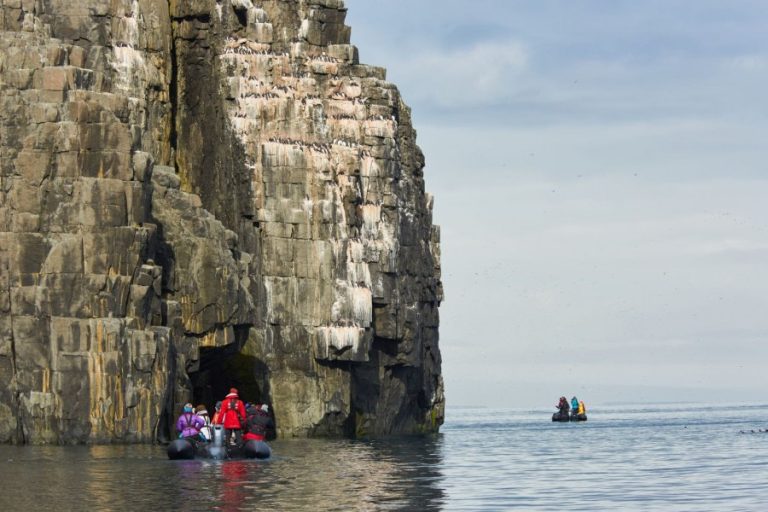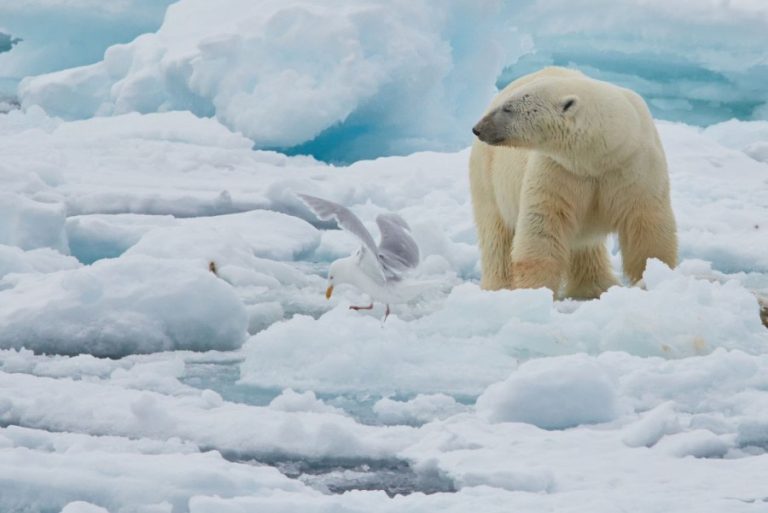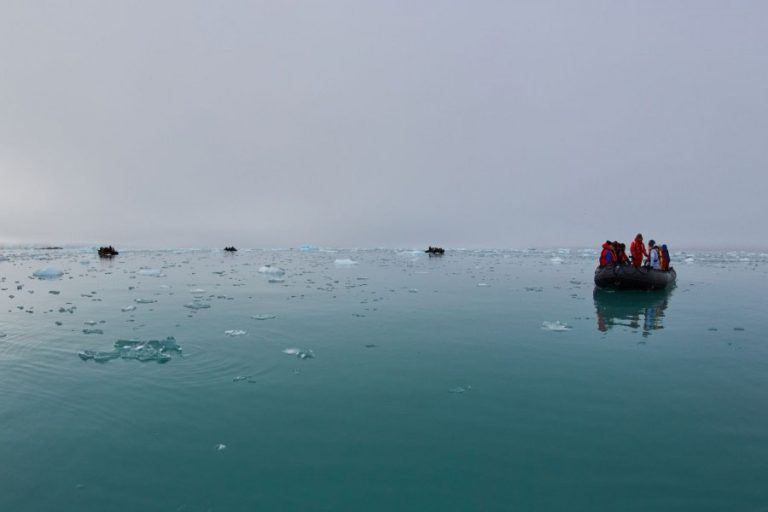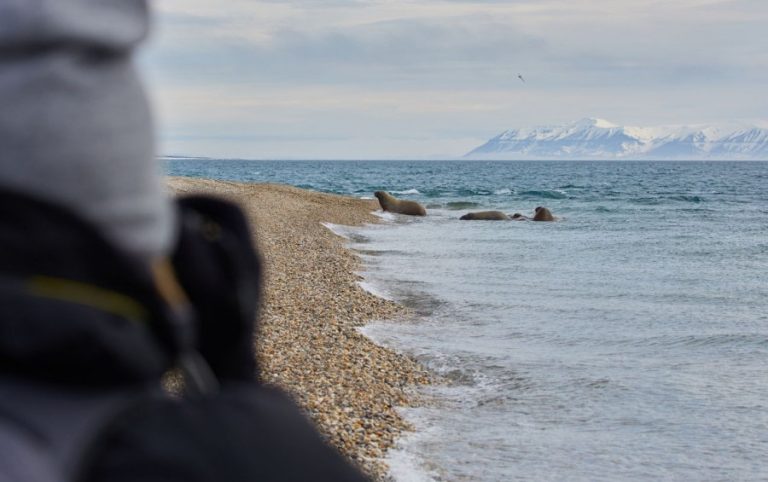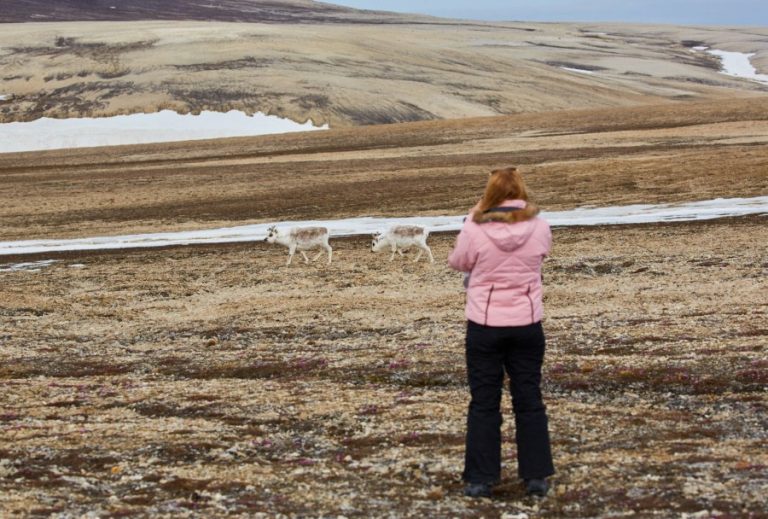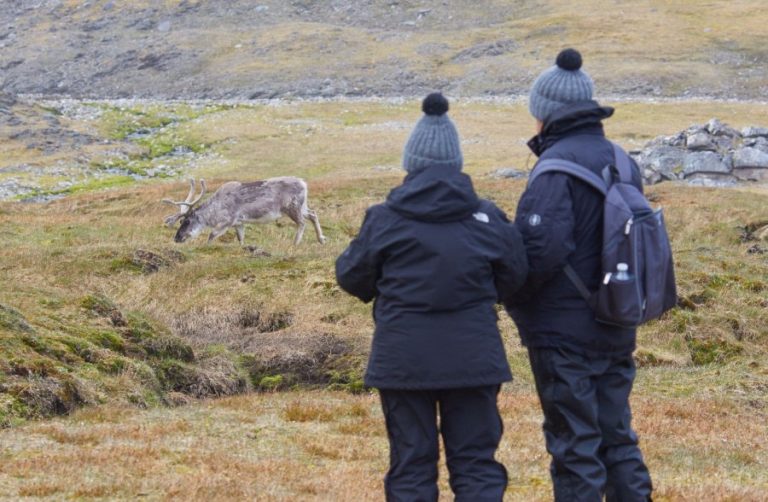What to expect when exploring Svalbard with Oceanwide
Offering majestic fjords, astounding ice formations, and some of the densest populations of polar bears on the planet, Svalbard stands out among all Arctic cruise destinations for the wildlife opportunities it offers. Known for seabird species such as kittiwakes, guillemots, and skuas, Svalbard is also rich in marine life, with many species of seals, walruses, whales, and, of course, polar bears thriving in this spectacular part of the north.
Taking a cruise to Svalbard means experiencing snow-swept peaks, rolling tundra, dramatically cut coastlines, and the chance to see truly exotic wildlife in its natural habitat.
Svalbard
A haven for bird life & home to stunning seabird colonies
Svalbard is a haven for bird life. Birds are common during an expedition cruise within the Søraust-Svalbard Nature Reserve and throughout the rest of Svalbard. You’ll see bird life in the skies around the ship, on land, and in the waters around you, with many migratory and endemic species being a big draw for photographers, birders, and wildlife enthusiasts.
Notable species include the Arctic tern, Northern fulmar, glaucous gull, little auk, gyrfalcon, and several kittiwake, jaeger, guillemot, and skua species. You may also spot the dainty snow bunting or the striking red phalarope on land. Many species of duck and goose can also be found throughout Svalbard, depending on the season, while other migratory estuarine birds, such as gannets, sandpipers, and razorbills, are frequent visitors to the Svalbard archipelago.
The surrounding ocean is rich in food, creating dynamic biodiversity and supporting vast breeding colonies for several species. Little auks breed in large colonies on cliffsides and mountain slopes and can be found in large numbers throughout Svalbard. At Alkefjellet, a renowned cliff in Ny-Friesland, over 60,000 breeding pairs of Brunnich’s guillemots swirl and dance in the skies above – a fantastic experience for any wildlife enthusiast. You can also spot puffin colonies in Svalbard, and kittiwakes, and fulmars in large numbers.
Svalbard
Svalbard
The icy realm of polar bears
Svalbard is perhaps best known as the realm of polar bears. This title is apt, as an estimated 3,000 polar bears are believed to inhabit Svalbard and the surrounding sea ice – a number higher than the human residents of the archipelago.
While polar bears are a common sight across Svalbard, fantastic encounters often occur when vessels are in the sea ice, either close to the Svalbard mainland or navigating ice further offshore. The marine life of Svalbard provides excellent food opportunities for polar bears, with abundant numbers of seals and walruses – both common prey for the polar bear. Often, bears can be seen during a hunt or following a recent kill.
Many Oceanwide Expeditions cruises to Svalbard have multiple polar bear encounters, often ranging into double figures. A polar bear encounter always occurs from the expedition vessel or aboard a Zodiac. Polar bears are never approached on shore, and all landing sites are scouted ahead of any shore excursion to ensure no polar bears are present.
All encounters follow the Norwegian government’s polar bear safety and protection guidelines and are performed at appropriate distances. Still, an encounter with the king of the north is unforgettable and a true highlight of any Arctic trip!
Svalbard
Vibrant marine life at the edge of the sea ice
Besides wildlife encounters on land, such as Svalbard reindeer, Arctic foxes, and Arctic hares, the sea ice, a dramatic, ethereal landscape constantly in motion and flux, offers superb opportunities to not only encounter iconic species but also witness Arctic life in all of its drama in close proximity.
Svalbard is home to a huge number of seals. They can commonly be seen basking on shore, but also frequent the edge of the sea ice, which is rich in food. Species such as the bearded seal are commonly seen on ice floes, and their distinctive bearded appearance is a recognizable symbol of Arctic fauna.
Other common seal species include the harp seal and ringed seal. These two are more frequently spotted at the edge of the ice pack and are more commonly hunted by polar bears. They maintain breathing holes in the thick sea ice, where predation by bears often occurs. Often sharing hauling out areas with seals is the walrus, an icon of the Arctic. These large Arctic residents frequently rest in groups, especially when caring for their young, and are a common sight across Svalbard.
Below the waves, the edge of the pack ice is the haunt of several whale species, including the beluga, a favorite of many visitors to the Arctic, and the most common species of whale found in Svalbard. These inquisitive mammals are only found in the Arctic region, and their ghost-white forms can sometimes be indistinguishable from submerged bergy bits.
Other whale species found in the waters of Svalbard include the humpback and fin whale, both renowned for their breaching and surface behavior, along with the blue whale, the largest animal to have ever lived, as well as the bowhead whale, a lesser-seen species living only in the northern waters of our world. You’ll also likely spot orcas, minke whales, and white-beaked dolphins. If you are extremely lucky, you may glimpse the elusive narwhal, once a source of European unicorn folklore.
Svalbard
Svalbard
The wildlife of Svalbard awaits
Throughout the Arctic expedition cruise season, Oceanwide Expeditions takes guests throughout Svalbard and the surrounding seas on many trips on all four of its expedition vessels. With Oceanwide Expeditions, you can circumnavigate Svalbard, enter the magical world of the pack ice, and discover the beauty of Svalbard and its iconic wildlife in stunningly unforgettable surroundings. Both the 2025 and 2026 seasons are available to book on the Oceanwide Expeditions website.
Don’t miss updates, news and reviews about Oceanwide Expeditions on Cruising Journal.

